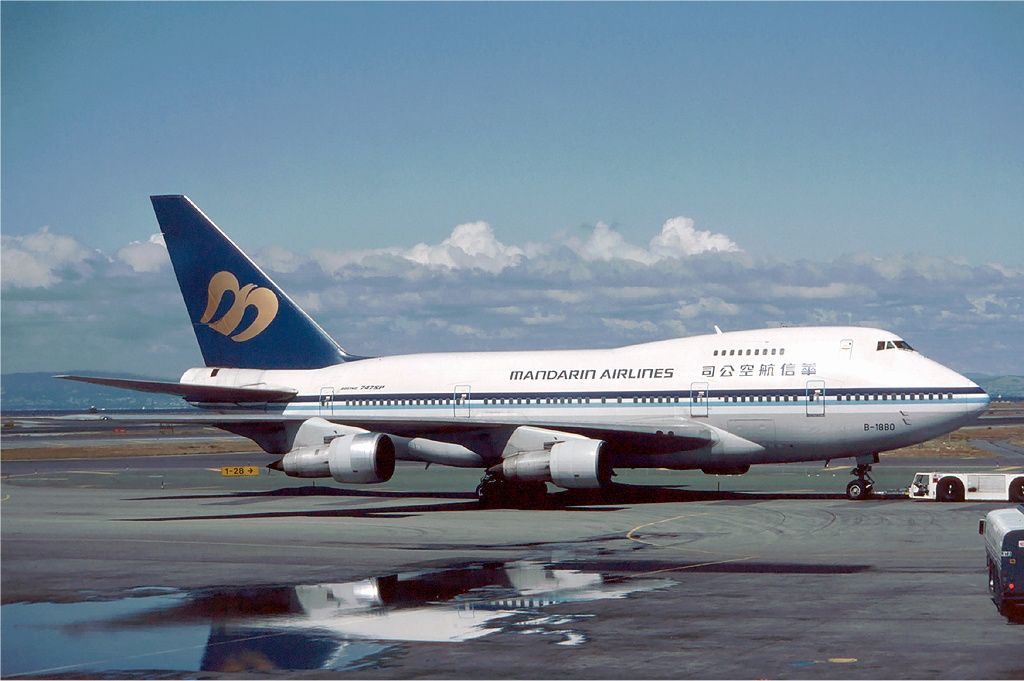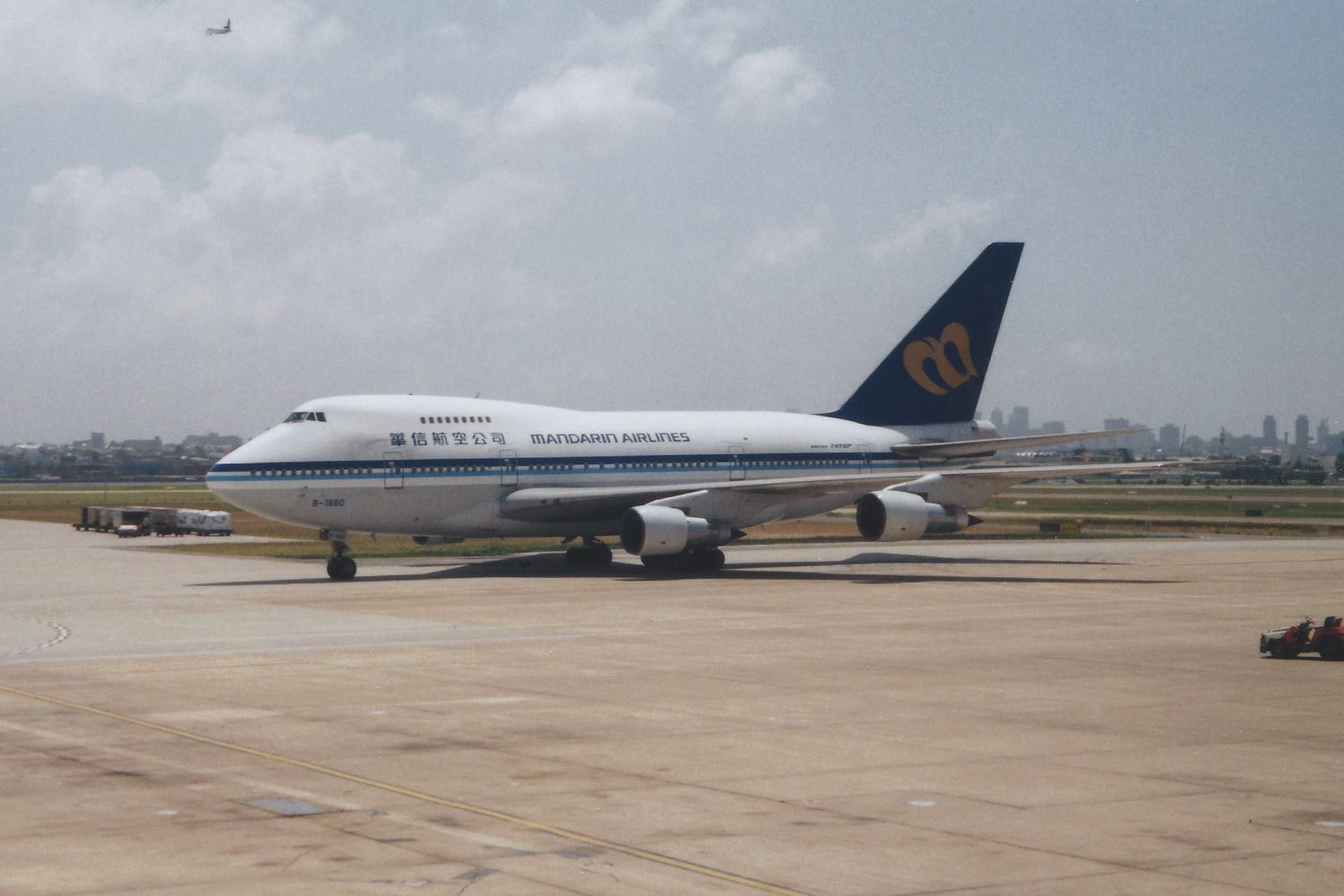In an era where most airlines are retiring (or have already retired) their 747s, it’s not uncommon to see the jumbo jet gracing the skies over Taiwan. Given TPE’s status as a critical cargo hub, you may have correctly guessed that most of them are freighters, whether from one of the various cargo companies such as Cargolux, or one of China Airlines’ many 747-400FSCDs.
Passenger jumbos are particularly scarce, though Asiana’s single non-cargo -400 stopped by a couple of times in April. Historically, the major local carriers had fleets of passenger examples for decades, but one lesser-known Taiwanese airline also used the massive Boeing jet, Mandarin Airlines.
The history of this regional Taiwanese airline
To find the earliest traces of what we know today as Mandarin Airlines, we have to go back to May 6th, 1966, when a new carrier called “Yung Shing Airlines” was formed. With primary hubs at Taipei Songshan Airport and Kaohsiung Airport, the local airline serviced many domestic airfields and islands with their historical fleet of Britten-Norman BN-2 Islanders and Cessna 404 Titans.
Over time, they added aircraft from manufacturers like Saab, Dornier, and Fokker, among others. On August 8th, 1987, the company changed its name to “Formosa Airlines,” which refers to the Portuguese term first used hundreds of years ago, meaning “beautiful island.”
Love aviation history? Discover more of our stories here.
They operated under this name into the 1990s. While this was happening, China Airlines was very busy, and in 1991 created a subsidiary called Mandarin Airlines.
Later in the 90s, when CI acquired a significant stake in Formosa Airlines, a merger had Formosa take on the Mandarin name, ultimately creating a larger single subsidiary.
Boeing 747s to facilitate long-haul travel
According to a statement on FlightGlobal dating back to July 19th, 1995, Mandarin Airlines had recently taken delivery of its first Boeing 747-400. They were already operating three examples of the 747SP variant at the time, though data from Planespotters.net shows that Mandarin operated four SPs in addition to the -400 at their peak. These jumbo jets were used on long-haul services, for example, from Taipei to Vancouver, San Francisco, and Sydney.
As explained on ch-aviation, Mandarin’s only non-SP Boeing 747, initially registered as B-16801, was eventually transferred to parent China Airlines in 2000, who operated it for a further four and a half years. It was configured with 319 seats in its economy section and 70 in business class, for a total capacity of 389 passengers.
Now owned by Jet Midwest, the aircraft resides at the aviation graveyard known as Victorville Southern California Logistics Airport.
Mandarin Airlines at present
Today the carrier is not operating any such long-haul travel nor double-decker airliners but rather closely resembles its roots, providing domestic-only services to many of Taiwan’s lesser-known destinations. From any major city (Taipei, Taichung, Kaohsiung), passengers can travel to the coastal areas of Hualien and Taitung in the East or the islands of Matsu, Penghu, and Kinmen. However, attempting to book an international flight through their website will send you to China Airlines’ page.
According to ch-aviation, the Mandarin fleet today features six Boeing 737-800s wet-leased from parent carrier China Airlines, a single Airbus A320-200 from Tigerair Taiwan, and nine ATR72-600 turboprops owned by the airline.
Did you ever fly on one of Mandarin Airlines’ 747s? Traveled with the carrier more recently? Let us know in the comments below.
Sources: Mandarin Airlines, ch-aviation, FlightGlobal, Planespotters.net





